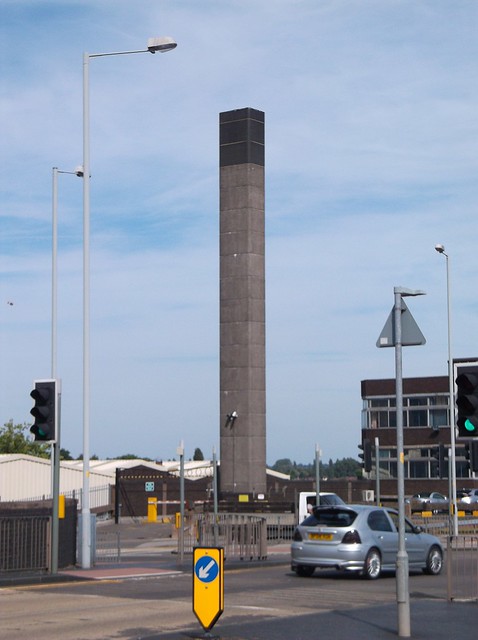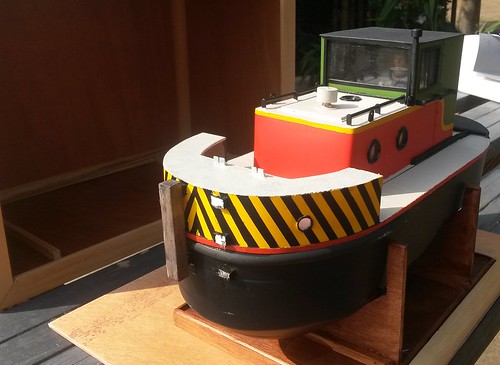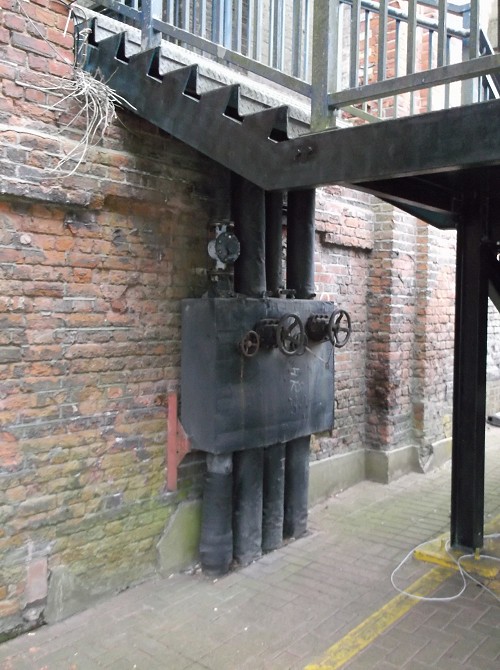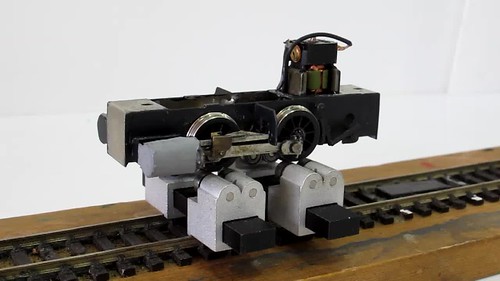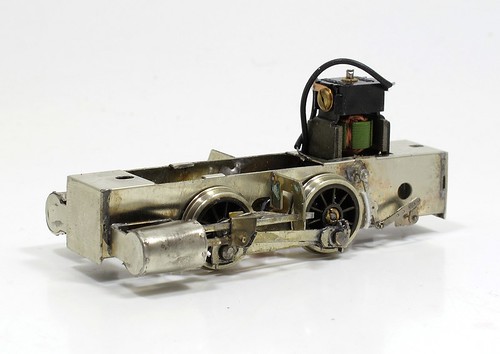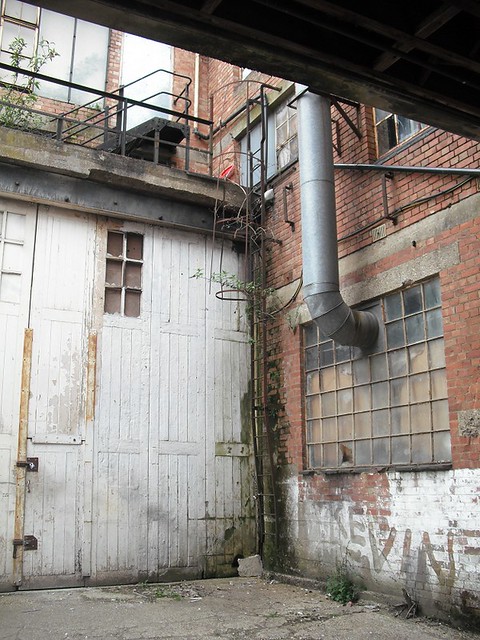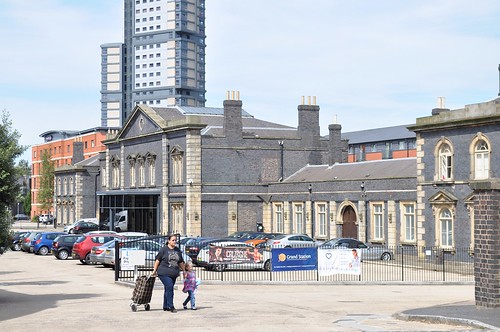
On Saturday, I mentioned that I'd been for a stroll around Wolverhampton looking at old railway sites. When the trip was mentioned, the site at the top of my list was the Low Level station.
For those who aren't familiar with the site, Wolverhampton has two stations. High Level is still in operation, but next door, and down about 50 feet, Low Level closed to passengers in 1972 and parcels in 1981.
I remember seeing the station when spending a week on a railcard tour in the mid 1980s. For some reason, a complete set of steam loco wheels were sat on the track running through it, but the building itself was firmly out of bounds.
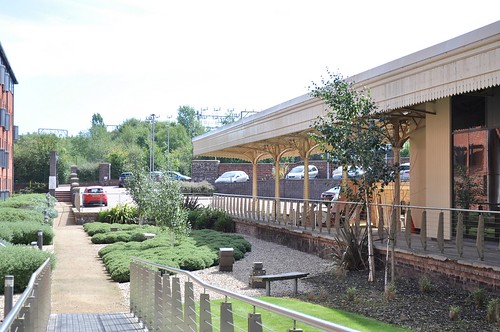
Now the tracks are gone, replaced by a garden with some rather nice arty models of luggage dotted around.
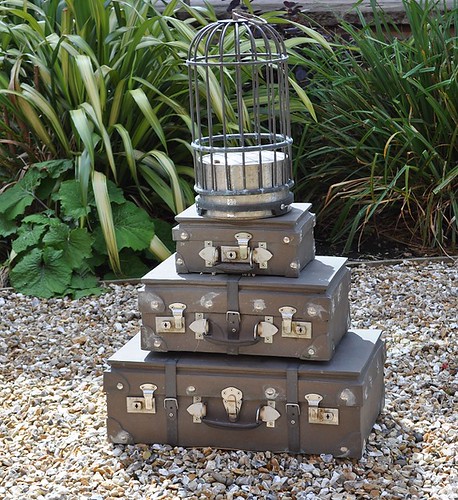
On one side there is a hotel and student accommodation. On the other, the station complete with canopy has been converted into an exhibition and function space.

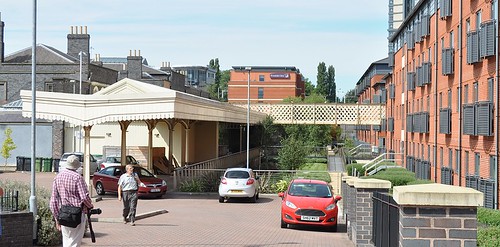
The conversion is very impressive. Although not normally open to the public, we managed by asking nicely, to be allowed in. The entrance is the old ticket hall which as been well restored, although I'm not sure the chandelier is original.
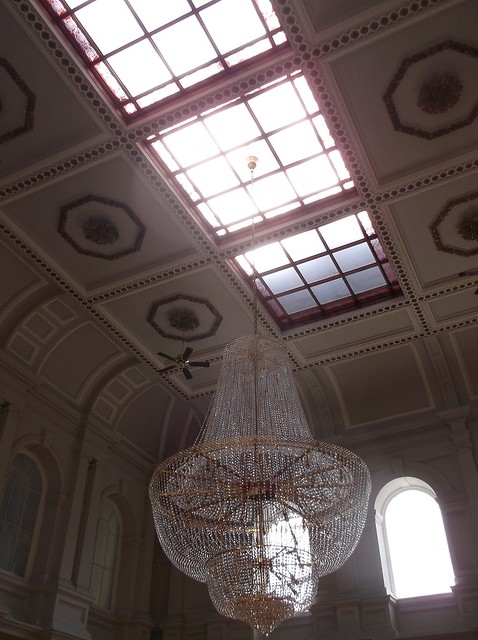
Most of the platform has been walled in along the track side. From the outside it looks like black glass, but inside there is a normal wall. The inside of the canopy roof is intact.
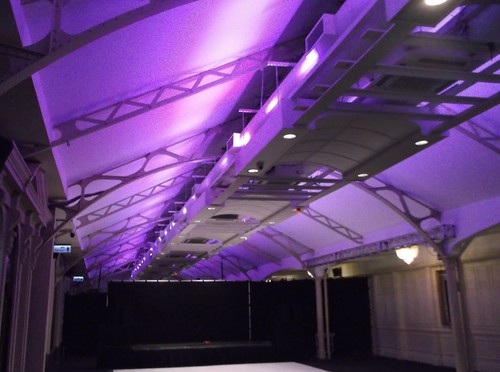
Along the building wall, all the original doors and windows have been restored and are in use.
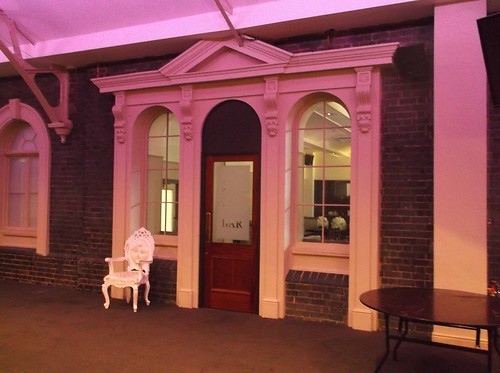
This would make a fantastic venue for a model railway exhibition. There's a nice flat floor, rectangular room and parking for exhibitors vans. 5 minutes stroll from the High Level station and 10 minutes from the city centre. OK, there's not enough parking for the visitors on site, but the city can help with that. The adjascent pub, The Great Western, is worth a trip too with good food, beer and walls full of railwayana.
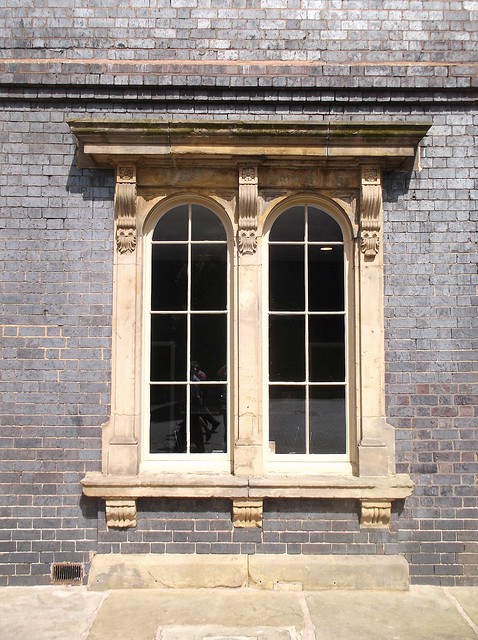
While the station hasn't been restored and turned into a railway museum as originally planned, what has been done is very impressive.
Thanks to the owners of Grand Station as it's now called. A trip to their website brings up loads more photos and is well worth a look.






